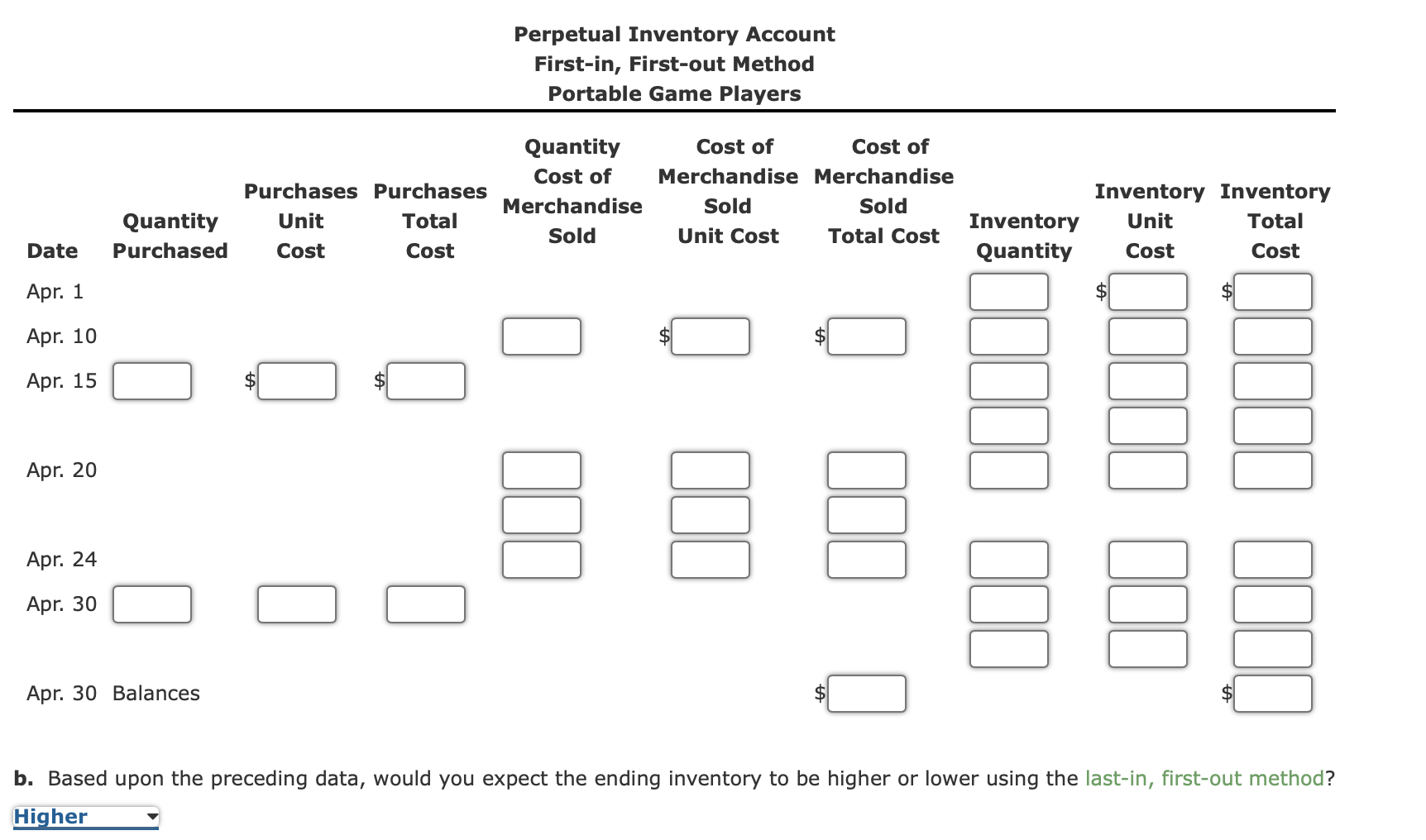Determine the cost of the merchandise sold for each sale and the inventory balance after each sale, presenting the data in the form illustrated in
Determine the cost of the merchandise sold for each sale and the inventory balance after each sale, presenting the data in the form illustrated in Exhibit 3. Under FIFO, if units are in inventory at two different costs, enter the units with the LOWER unit cost first in the Cost of Merchandise Sold Unit Cost column and in the Inventory Unit Cost column.

Perpetual Inventory Using FIFO Beginning inventory, purchases, and sales data for portable game players are as follows: EE Apr. 1 Inventory 53 units @ $70 10 Sale 39 units 15 Purchase 27 units @ $74 20 Sale 23 units 24 Sale 10 units 30 Purchase 29 units @ $77 The business maintains a perpetual inventory system, costing by the first-in, first-out method. a. Determine the cost of the merchandise sold for each sale and the inventory balance after each sale, presenting the data in the form illustrated in Exhibit 3. Under FIFO, if units are in inventory at two different costs, enter the units with the LOWER unit cost first in the Cost of Merchandise Sold Unit Cost column and in the Inventory Unit Cost column.
Step by Step Solution
3.43 Rating (156 Votes )
There are 3 Steps involved in it
Step: 1
solution a prefer the image solution b lower perpetual inv...
See step-by-step solutions with expert insights and AI powered tools for academic success
Step: 2

Step: 3

Ace Your Homework with AI
Get the answers you need in no time with our AI-driven, step-by-step assistance
Get Started


